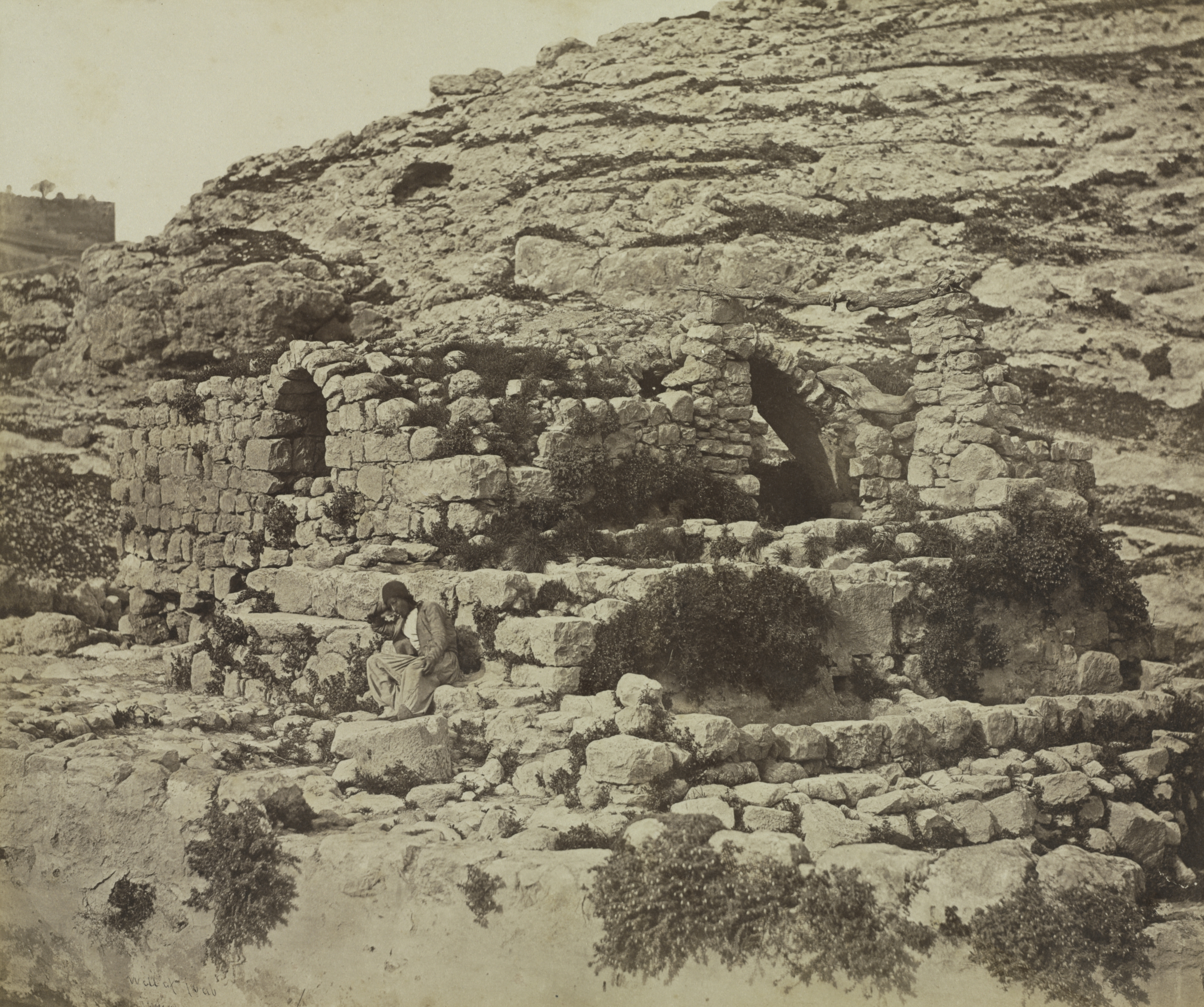The Cleveland Museum of Art
Collection Online as of April 19, 2024

Well of Joab, Jerusalem
1857
(British, 1813 (?)-aft 1865)
(British, 1830–1906)
Image: 25 x 29.7 cm (9 13/16 x 11 11/16 in.); Mounted: 45.6 x 59.3 cm (17 15/16 x 23 3/8 in.); Matted: 50.8 x 61 cm (20 x 24 in.)
John L. Severance Fund 1998.157
Location: not on view
Description
This charming view of the Well of Joab resulted from the pioneering photographic collaboration of James Robertson and his brother-in-law, Felice Beato, while on a trip to the Near East in 1857. Their high quality, large, beautifully executed, and carefully composed photographs are products of the first known use of the wet-collodion process in the Holy Land. The images depict the most holy places in and near Jerusalem, typically recording the sites from striking points of view, as in the lush salt print Well of Joab, Jerusalem. The camera was pointed upward, producing a three-quarter view of the well’s architectural stone ruins, which appear to merge into the rocky surface of the hilly background. In the foreground of the composition, a solitary seated figure establishes scale and instills this otherwise desolate scene with a sense of humanity. Of the Holy Land photographers, Robertson and Beato were the first to successfully integrate human figures into the surrounding scenery of their compositions.- Signs of Life: Recent Photography Acquisitions. The Cleveland Museum of Art, Cleveland, OH (organizer) (November 22, 2003-April 7, 2004).
- {{cite web|title=Well of Joab, Jerusalem|url=false|author=James Robertson, Felice A. Beato|year=1857|access-date=19 April 2024|publisher=Cleveland Museum of Art}}
Source URL:
https://www.clevelandart.org/art/1998.157